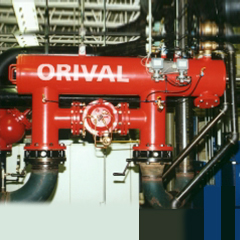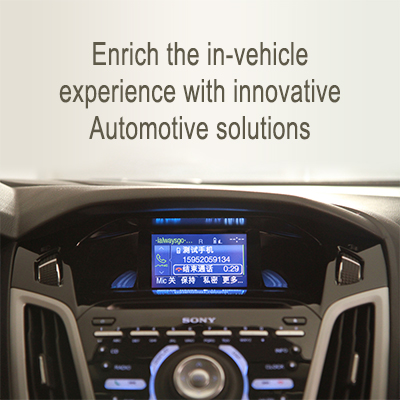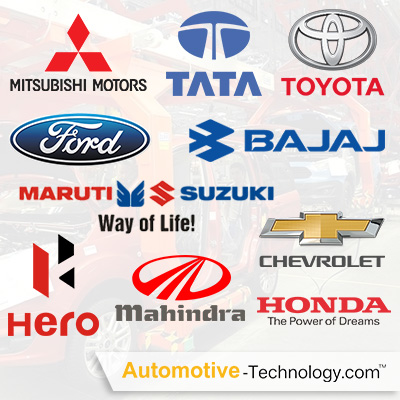Safety First: Brakes and Braking System Components in the B2B Automotive Sector

In the ever-evolving realm of the B2B automotive sector, emphasizing safety goes beyond mere legal compliance; it stands as a fundamental business necessity. Among the paramount elements of vehicle safety, the braking system takes center stage. This article seeks to offer an extensive manual for enterprises engaged in the B2B automotive industry, delving into the nuanced aspects of brakes and their constituent components.
| Also Read: How Brakes and Advanced Components Keep Automotive Safety on Track? |
1. Evolution of Brake Technology in B2B Automotive: An Overview:
The evolution of brake technology within the B2B automotive sector is a journey marked by continuous advancements, shaping the transition from traditional drum brakes to the contemporary reliance on disc brakes. Key milestones in this evolution are highlighted, starting with the introduction of hydraulic braking systems that revolutionized braking efficiency. The narrative then progresses to the incorporation of electronic brake force distribution (EBD), further refining safety standards in commercial vehicles.
Understanding this historical progression becomes imperative for businesses operating in the B2B automotive industry. By tracing the evolution of brake technology, businesses can position themselves at the forefront of the latest advancements, ensuring they remain adaptive and informed in an industry that continually prioritizes performance and safety.
| Read More: Decoding Automotive Brakes and Key Components for Optimal Performance |
2. The Role of ABS (Anti-lock Braking System) in Commercial Vehicles:
In the B2B automotive sector, Anti-lock Braking Systems (ABS) have evolved into a standard and indispensable feature for commercial vehicles. ABS, as a pioneering technology, plays a pivotal role in significantly enhancing vehicle control. By preventing wheel lock-up during intense braking, ABS ensures a more controlled and stable braking experience. This not only contributes to reduced stopping distances but also elevates safety levels across diverse driving conditions.
3. Importance of Quality Brake Pads and Discs: A Supplier's Perspective:
In the realm of braking systems, the role of brake pads and discs is paramount, exerting a profound impact on efficacy. The efficacy of brake systems hinges on the caliber of these elements. To achieve this, businesses are advised to prioritize suppliers that adhere to stringent quality standards. A robust supply chain, anchored by reputable suppliers, ensures the consistent performance of brake systems, underscoring the interconnected relationship between quality components and the reliability of the B2B automotive sector.
4. Brake Fluid: Choosing the Right Formulation for Optimal Performance:
In the intricacies of a braking system, brake fluid plays a role often underestimated. Selecting the right brake fluid is not a trivial matter. Paramount considerations include compatibility with diverse braking system materials and the fluid's ability to withstand fluctuating temperatures. Businesses are urged to adopt a well-informed approach to brake fluid selection, recognizing it as a foundational element in ensuring safety and sustained operational excellence. By prioritizing this aspect of maintenance, the B2B automotive sector can uphold the integrity of its braking systems and, consequently, contribute to the overall safety and reliability of commercial fleets.
5. The Significance of Routine Brake Inspections and Maintenance:
Maintaining safety and prolonging the life of braking components is contingent on regular inspections and proactive maintenance in the B2B automotive sector. Crucial elements such as brake pads, rotors, calipers, and brake lines require systematic scrutiny as part of routine maintenance practices. Businesses are strongly advised to adhere to a comprehensive checklist during these inspections, ensuring a thorough examination of each component. Identifying potential issues promptly is imperative. Whether it's worn brake pads, compromised rotors, or issues with calipers and brake lines, timely detection is the key to preventing more extensive and costly repairs.
Beyond the immediate benefits of safety and performance, this proactive stance safeguards against potential operational disruptions and financial implications associated with major brake system repairs. In essence, the proactive commitment to routine brake inspections and maintenance is a cornerstone for sustained safety and optimal performance in the B2B automotive sector.
6. Addressing Heat Management in Heavy-Duty Braking Systems:
In the realm of heavy-duty vehicles within the B2B automotive sector, effective heat management is a paramount concern for braking systems. The unique challenges associated with heavy-duty applications often stem from the substantial loads these vehicles carry, resulting in elevated temperatures during braking. One significant issue revolves around brake fade, where prolonged or intense braking generates excessive heat, leading to reduced braking efficiency. This not only compromises safety but also accelerates wear on crucial braking components, such as brake pads and discs.
To counter these challenges, businesses must implement robust strategies for heat management in heavy-duty braking systems. This involves investing in advanced brake materials with superior heat dissipation properties and optimizing ventilation systems to facilitate rapid heat dispersion. Furthermore, the integration of cooling technologies, such as air ducts or specialized cooling fins, proves instrumental in preventing overheating during extended braking scenarios. Regular maintenance checks should include assessments of these cooling mechanisms to ensure they remain effective over time.
By proactively addressing heat-related issues in heavy-duty braking systems, businesses can enhance both the safety and durability of their fleets.
7. Innovations in Brake System Monitoring and Diagnostics:
Advancements in technology within the B2B automotive sector have transformed the landscape of brake system maintenance. Leading this revolution is the integration of sensors, strategically positioned within braking systems. These smart sensors work tirelessly, gathering data on critical parameters like brake pad wear, brake fluid quality, and system temperature. The real-time data collected is subsequently analyzed by sophisticated algorithms, offering a comprehensive overview of the health of the braking system.
Real-time diagnostics play a pivotal role in this evolution. Businesses now can receive instantaneous feedback on the condition of their braking systems. This not only expedites the identification of potential issues but also enables proactive maintenance interventions before problems escalate. The adoption of these technologies translates into more than just convenience – it's a paradigm shift towards proactive and predictive brake system maintenance. By staying ahead of potential concerns, businesses can significantly reduce downtime, optimize maintenance schedules, and, most importantly, enhance the overall safety and reliability of their commercial fleets.
8. Brake-by-Wire Systems: Enhancing Control and Safety:
A revolutionary advancement in brake control technology, brake-by-wire systems have reshaped the landscape of the B2B automotive sector. Unlike traditional braking systems, brake-by-wire systems replace mechanical connections with electronic sensors and actuators. This shift allows for precise, electronically controlled modulation of braking force. The result is not only enhanced control but also improved responsiveness, especially in situations requiring rapid adjustments.
Brake-by-wire systems carry significant safety implications. Electronic Control Units (ECUs) consistently oversee and enhance braking performance, minimizing the chances of wheel lock-up and skidding. Furthermore, these systems have the potential to integrate with Advanced Driver Assistance Systems (ADAS) for additional safety improvements. Emphasizing seamless integration, the focus spans from ensuring system reliability to implementing robust cybersecurity measures. By comprehending and addressing these factors, businesses can optimize the benefits of brake-by-wire systems, marking a new era of control and safety in the B2B automotive sector.
9. Regulatory Compliance and Safety Standards in B2B Automotive Braking:
In the B2B automotive sector, a thorough understanding of regulatory requirements is fundamental for business success. Key regulations, stipulated by both government agencies and industry standards organizations, shape the standards for braking systems in commercial vehicles.
Businesses are advised to actively stay abreast of updates and modifications in regulations. This proactive stance not only guarantees a resilient and legally compliant operation but also highlights a commitment to prioritizing safety within the B2B automotive sector. With regulations evolving to tackle emerging challenges and technologies, staying ahead of compliance requirements becomes a strategic imperative for businesses aiming to excel in this dynamic industry.
Conclusion: In conclusion, prioritizing safety in the B2B automotive sector involves a comprehensive understanding of braking systems. By staying informed about the latest technologies, emphasizing quality in components, and adhering to maintenance best practices, businesses can enhance safety, reduce accidents, and build a reputation for reliability in the industry.



